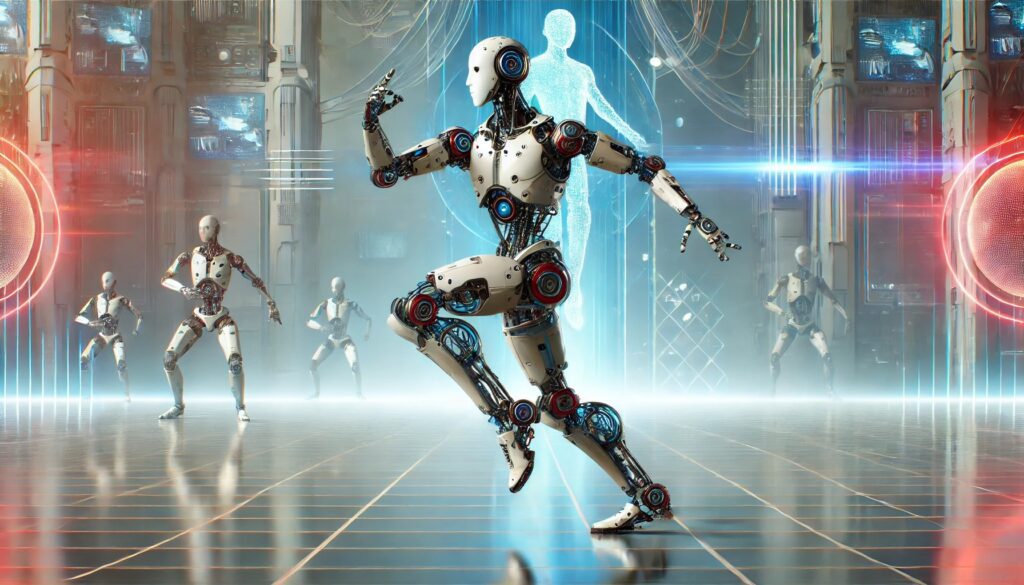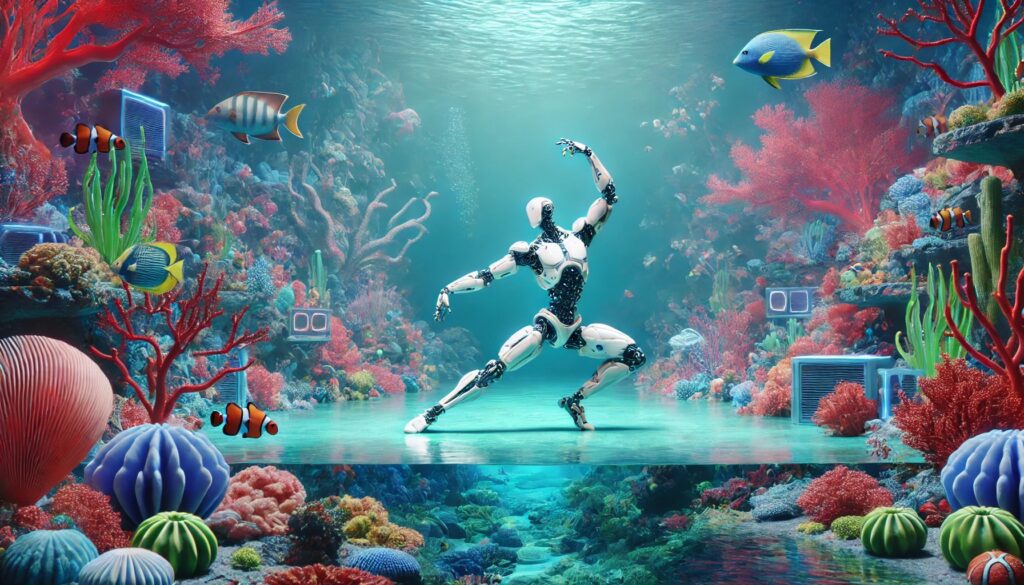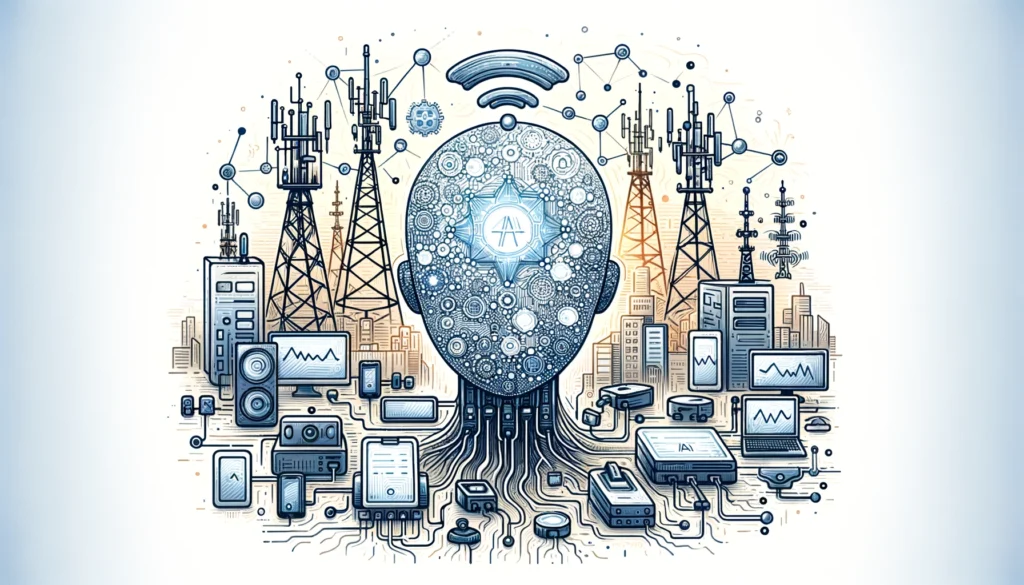
The world of robotics is ever-evolving, and recent advancements at the University of California San Diego (UCSD) are pushing the boundaries of what’s possible. Engineers there have successfully trained a humanoid robot to perform a range of expressive movements, from dancing to high-fiving, all while maintaining balance on varied terrains.
The Dawn of Expressive Robotics
At UCSD, a team of dedicated engineers has developed a robot capable of learning and executing expressive movements. This includes not only simple dance routines but also gestures like waving, high-fiving, and even hugging. This breakthrough signifies a monumental step forward in the realm of robotics.
Training for Versatility
One of the remarkable aspects of this research is the robot’s ability to maintain a steady gait on diverse terrains. This versatility ensures the robot can perform its tasks in various environments without compromising its stability or precision. The engineers employed advanced algorithms and machine learning techniques to achieve this level of adaptability.
Dancing with Precision
The robot’s dance routines are more than just a series of programmed steps. They are a testament to the sophisticated artificial intelligence driving the robot’s movements. Each gesture is calculated, ensuring fluidity and grace akin to a human dancer. The ability to perform such routines highlights the robot’s potential in entertainment and therapeutic settings.

The Power of Gestures
Incorporating gestures like waving and high-fiving into the robot’s repertoire makes it more relatable and interactive. These gestures are fundamental in human communication, and their inclusion in robotic behavior bridges the gap between humans and machines. Imagine a future where robots can greet you at the door with a friendly wave or a high-five.
Embracing with a Hug
Perhaps the most heartwarming of the robot’s new abilities is its capability to give hugs. This movement requires a nuanced understanding of pressure and proximity, showcasing the robot’s advanced sensory systems. Hugs are a powerful form of human connection, and a robot that can replicate this can significantly impact fields such as elderly care and mental health support.
Navigating Diverse Terrains
The robot’s ability to maintain a steady gait on various surfaces is crucial for its practical applications. Whether it’s a smooth floor or a rugged outdoor path, the robot can adapt its movements to stay balanced. This adaptability is essential for real-world applications, from assisting in homes to exploring uncharted terrains.
The Future of Human-Robot Interaction
The implications of these advancements are profound. As robots become more expressive and versatile, their integration into daily life becomes more seamless. They can assist in household chores, provide companionship, and even offer therapeutic support. The engineers at UCSD are paving the way for a future where robots are not just tools but companions and collaborators.
Challenges and Innovations
Developing a robot with such capabilities is no small feat. The engineers faced numerous challenges, from perfecting the algorithms to ensuring the hardware could support such intricate movements. Each challenge overcame brings us closer to a future where robots are a natural part of our world.
Beyond the Lab
The success of UCSD’s humanoid robot extends beyond the laboratory. These robots have the potential to revolutionize various industries, including healthcare, entertainment, and domestic services. Their ability to learn and adapt makes them invaluable in settings that require interaction and empathy.
Conclusion
The work done by engineers at the University of California San Diego is a significant leap forward in the field of robotics. By teaching a humanoid robot to perform expressive movements and maintain stability across diverse terrains, they have opened up new possibilities for how robots can be integrated into our lives. These advancements not only showcase the potential of robots but also bring us closer to a future where human-robot interaction is a natural and beneficial part of our daily routines.
For more information on this exciting development, check out the detailed studies and findings here.
FAQ
What are the key features of the humanoid robot developed at UCSD?
The humanoid robot developed at UCSD can perform a variety of expressive movements, including dance routines, waving, high-fiving, and hugging. It can also maintain a steady gait on diverse terrains, making it adaptable to different environments.
How does the robot learn these movements?
The robot learns these movements through advanced machine learning algorithms. These algorithms allow the robot to analyze and mimic human movements with high precision and fluidity.
What practical applications could this robot have?
This robot has potential applications in various fields, including:
- Entertainment: Performing dance routines and interacting with audiences.
- Healthcare: Providing companionship and therapeutic support through gestures like hugging.
- Elderly Care: Assisting with daily tasks and offering emotional support.
- Domestic Services: Helping with household chores and interacting with family members.
How does the robot maintain balance on different terrains?
The robot uses a combination of sensors and adaptive algorithms to maintain its balance. These technologies enable the robot to adjust its movements based on the terrain, whether it’s a smooth floor or a rugged outdoor path.
What makes the robot’s movements expressive?
The robot’s movements are considered expressive due to their fluidity and accuracy. The use of sophisticated AI and robotics technology allows it to perform gestures and routines that closely mimic human actions, making its movements appear natural and engaging.
How does the robot’s ability to hug impact its usefulness?
The ability to hug showcases the robot’s advanced sensory systems and understanding of human interactions. This feature can be particularly beneficial in therapeutic settings, providing comfort and emotional support to those in need.
What challenges did the engineers face in developing this robot?
Engineers faced several challenges, including perfecting the algorithms that control the robot’s movements and ensuring the hardware could support such intricate actions. Overcoming these challenges required extensive research and testing.
How can this robot be integrated into daily life?
As robots like the one developed at UCSD become more advanced, they can be seamlessly integrated into daily life. They can assist with household tasks, provide companionship, and even help in healthcare settings, making them valuable additions to modern society.
What are the future implications of this technology?
The advancements in humanoid robots at UCSD suggest a future where robots are not just tools but interactive partners in daily life. This technology could revolutionize how we interact with machines, making them more intuitive, helpful, and emotionally intelligent.
Where can I learn more about this research?
For more detailed information on this groundbreaking research and its implications, please check out the detailed studies and findings here.
ChatGPT kann Fehler machen. Überprüfe wichtige Informationen.





